Country Report: India
The global importance of the Indian pharmaceutical industry and the affordable generic drugs it produces is indisputable. But despite its evolving international role, India’s domestic healthcare system remains underperforming and undercapitalized.
This sponsored supplement was produced by Focus Reports
Report Director: Julija Lukaityte
Report Coordinator: Luca Nardini
Report Publisher: Diana Viola
Senior Editor: Louis Haynes
Editor: Patrick Burton
Graphic Assistance: Miriam León
Cover photo ©: Abhidnya Ghuge ‘Burning Water’ (2013), Women & Their Work Art Gallery. Photo: www.abhidnyaghuge.com
For exclusive interviews and more info, please log onto www.pharmaboardroom.com or write to contact@focusreports.net
INDIA PHARMACY TO THE WORLD?
In 2018, the global importance of the Indian pharmaceutical industry and the affordable generic drugs it produces is indisputable. As Daara B. Patel, president of the Indian Drug Manufacturing Association (IDMA) astutely asserts, "There is pretty much no country on earth that can manage without Indian medicines. Almost every developed country has an aging population and, as their budgets continue to shrink, affordable quality generics from India become increasingly appealing."

Dilip G Shah, secretary general of the Indian Pharmaceutical Association (IPA), strikes a similarly confi dent tone in proclaiming that "The relative affordability of India-made generic drugs compared to their patented counterparts elsewhere has not only enabled India to provide quality drugs at a low cost for its own people but has also rendered the country a de facto pharmacy to the world." He continues, "In many markets, including the US, there is a large section of society which does not have the means to pay for the treatments it requires. The Indian industry is providing low-cost medicines around the globe and the beauty of its model is serving a social cause through fi nancially viable enterprise."
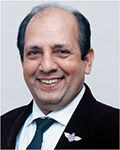
Daara B. Patel, secretary-general, IDMA
Moreover, Indian pharma's international role is gradually evolving not only to encompass low-cost generics, but also more complex and greater value-added products. At the forefront of this phenomenon is the recent US FDA approval of Ogivri™, the biosimilar to trastuzumab, developed by US-based Mylan and the Indian entity Biocon. Ogivri™ ranks as the fi rst biosimilar to be approved for stomach and breast cancer in the US. Biocon's chairperson and managing director Kiran Mazumdar-Shaw proudly notes that, "Getting the approval of Ogivri™ is a signifi cant endorsement of the quality of this product and to our capabilities to develop these complex drugs for global markets."
HEALTHCARE WOES: UNDERPERFORMANCE AND NCDS
As a backdrop to these international successes, however, India's domestic healthcare system remains underperforming, undercapitalized and generally unfit for purpose. Kanchana TK, director general of the Organization of Pharmaceutical Producers of India (OPPI), paints a rather gloomy picture: "India continues to be one of the poorest performers in its region in terms of quality and accessibility of healthcare, ranking at 154, far below China, Sri Lanka and even Bangladesh, according to the Global Burden of Disease study published in The Lancet in 2017... In fact, the total expenditure on healthcare in our country as a percentage of GDP is a mere four percent, while in the US it is 17 percent," she bemoans. The comparative statistics certainly make for unhappy reading: according to World Health Organization (WHO) data, for countries performing best in the healthcare sector, the US ranks 37, while India lags behind at a lowly 112.

Kanchana TK, director general, OPPI
Despite a decrease in the burden of infectious diseases in India, the country's already dire healthcare situation is being compounded by an increase in Non-Communicable Diseases (NCDs) such as heart disease, stroke and diabetes. As Jawed Zia, country president of Novartis explains, "India is facing a dual public health burden. The pressure from communicable, maternal, neonatal and nutritional (CMMND) diseases has somewhat reduced, but still remains uncomfortably high. Indeed, according to The Lancet, deaths from CMMND diseases – largely preventable and mostly due to poor sanitation and public health – decreased from 53.6 percent in 1990 to a nonetheless sizeable 27.5 percent in 2016." "At the same time, deaths from NCDs accounted for 61.8 percent of all dealths in 2016 versus 37.9 percent in 1990," notes Zia. The impact that a rise in NCDs places on the wider economy can be severe, as Zia elaborates, "NCDs not only affect health, but also productivity and economic growth."

Jawed Zia, country president, Novartis
Novo Nordisk's Melvin D'Souza has, however, seen a change in attitudes for the better on the NCD front. "I believe that the situation positively changed over the past five years as the government has slowly started to give special focus to chronic care. That is why they established a fund for NCDs. However, we believe the focus that they currently give is not sufficient and they should allocate more funds. On the one hand, we cannot entirely blame the government because they are still caught up with the communicable disease burden, but on the other hand it is fundamental that we play a key role". D'Souza continues, "To this purpose, we are trying to work closely with healthcare experts in the government setting and build an understanding of the disease. At the moment, for instance, we are involved in a project in which we cooperate with more than 100 healthcare centers in Bihar where we train doctors."

Melvin Oscar D'Souza, CVP and general manger, Novo Nordisk
A NEW NATIONAL HEALTH POLICY: TURNING THE CORNER?
To combat India's myriad health issues, the government of Prime Minister Narendra Modi put forward a new National Health Policy in 2017 (NHP 2017), which advocates providing a larger package of insured comprehensive primary healthcare. This is to be achieved by establishing 'Health and Wellness Centers' throughout the country, allocating a greater proportion of resources to primary care with two beds per 1,000 population distributed to enable access, and ensuring the availability of free, comprehensive primary healthcare services for all aspects of reproductive, maternal, child and adolescent health. Also included in the package is free at the point of delivery treatment for the most prevalent communicable, non-communicable and occupational diseases. The Indian government clearly sees this step as a departure from previous policies, with Modi tweeting immediately after having secured Union Cabinet approval that, "This National Health Policy marks a historic juncture in our endeavor to create a healthy India where everyone has access to quality healthcare."
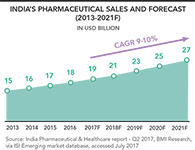
Vinod K. Paul from the National Institute for Transforming India (NITI), the government think tank involved in drafting the policy, describes the shift in approach that it embodies thusly: "An important pillar of the policy is to build a very strong primary healthcare sector as a way to build a new India, on which individual health priorities will be addressed." "At the moment, healthcare is very much focused on maternal and reproductive health issues," he notes. "As we move towards a comprehensive aspirational comprehensive primary healthcare, we will have to include care for major NCDs, geriatric healthcare, mental health, palliative care and rehabilitative care services."
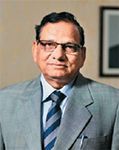
Vinod K. Paul, member, NITI Aayog
PRICES ON THE SLIDE
Such a comprehensive stepping up of healthcare investment will not, however, come cheap. One method of securing the necessary funds to implement NHP 2017 is shifting the responsibility from government to the pharmaceutical industry by forcing companies to reduce the prices of their drugs, a solution that the industry is unsurprising disgruntled with. "India is only taking baby steps towards the concept of 'value over cost.' In many Western countries, you see value attributed to say a diagnostic test based on how much hospitalization or public spending it might save. In India, unfortunately there is still the tendency to correlate price with cost rather than value," warns Shravan Subramanyam, managing director of Roche Diagnostics.

Shravan Subramanyam, managing director India and Neighboring Countries, Roche Diagnostics
"About 20 percent of the drugs manufactured in or imported to India are under price control based on the National List of Essential Medicines prepared by the Ministry of Health and Family Welfare," confides Bhupendra Singh, chairman of the National Pharmaceutical Pricing Authority (NPPA). "Our responsibility is to ensure that these drugs are available at affordable costs as per the government's guidelines, which we have implemented accordingly. Furthermore, under exceptional circumstances NPPA can cap the price of any other drug which is not part of the National Stockist of Field Medicines," he confirms.

Bhupendra Singh, chairman, National Pharmaceutical Pricing Authority (NPPA)
“The biggest challenge is to convince the industry that our pricing is helping them instead of harming them. At the end of the day, we create affordability in a marketplace in which out of pocket expenditure accounts for between 60 and 70 percent of spending on medicines,” argues Singh. Indeed, the most recent Ministry of Health figures suggest as many as 18 percent of Indian households face what are known as “catastrophic healthcare costs,” defined as “health expenditure exceeding 10 percent of total monthly consumption expenditure.”
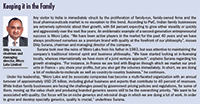
Some companies have managed to de-risk their operations and are proving successful in bringing a steady stream of new, quality products to market despite prevailing constraints on prices. “The challenge is very much about identifying optimum ways to launch efficacious products at affordable price tags,” acknowledge Satish Kumar Singh and Shashi Shekhar Kumar, managing director and vice president international business of Alkem’s fully owned subsidiary Cachet. This might mean reworking the business model to hedge risks and reduce exposure to state mandated pricing policies. “The way we do it is for Cachet Pharmaceuticals Pvt. Ltd. to focus on the non-regulated market segments while Alkem Laboratories Ltd., our parent company, has its hold in regulated markets and, as such, we complement each other,” he explains. “The end result is that we maintain a good tempo of product launches and patients periodically see new medicines coming in,” they enthuse? .

Satish Kumar Singh Singh, managing director, Cachet Pharmaceuticals
“Recent changes in pricing ensure that the market remains dynamic and the pressures on industry are running high, but ultimately it is the patient that matters and that is why we have made ‘going beyond the pill’ a strategic priority for the future,” recounts Venu Ambati, managing director of Abbott India. He believes that the industry should no longer content itself just with pushing pills and medical devices but needs to “play a proactive role in “building an interactive and affordable approach to public healthcare.”

Shashi Shekhar Kumar, vice president - international business, Cachet Pharmaceuticals
However, he is quick to point out that ‘affordability’ should not be dealt with in isolation, but rather as part of a comprehensive, holistic strategy. “We also need to focus on improving the other ‘A’s of the system – that is ‘accessibility’ and ‘availability,’ he muses. “There are multiple pathways to affordable medicine, but what is for sure is that we strive to be a proactive and involved partner in ensuring quality, trusted, affordable healthcare for the Indian people,” he stresses. “Over the next five years, we want to create an innovative healthcare ecosystem that improves access and is based on technology and insights, for both ‘now’ and ‘next’ therapies.”

Venu Ambati, managing director, Abbott India Ltd
THE INDIAN DOMESTIC MARKET: ENDURINGLY IMPORTANT
Despite the aforementioned pricing problems among other issues, there remains great cause for optimism in the Indian domestic pharmaceutical market. India’s enormous population of around 1.35 billion; a national economy beginning to purr with 7.4 percent GDP growth projected for 2018; and a growing middle class with greater purchasing power – the number of households with a disposable income of more than USD 10,000 leaping from around 2.5 million in 1990 to nearly 50 million in 2015 – has led to market growth in both the innovative and generics segments.
Amit Mookim, managing director South Asia at IQVIA, feels that the USD 36 billion Indian market is now entering a new époque. He explains that, “There are three phases in the development of the Indian pharmaceutical market. The first phase, which lasted from 1990 to the early 2000s, was the period of building up of the industry and the product mindset, where the plants came up, the portfolio came up and the TRIPS landscape was defined. The next stage was hardcore commercialization where individual companies started to possess more than 150 brands. Today, large pharma companies typically preside over something in the region of 700 to 800 brands. Now, we are entering the third era, which is oriented towards patients and will likely transform the way that pharmaceutical companies operate in India.”
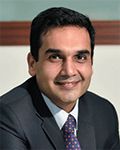
Amit Mookim, managing director South Asia, IQVIA
Within this context – and despite the rapid internationalization of many Indian pharma companies – the Indian market remains the bread and butter of most domestic firms’ operations. Umang Vohra, managing director and global CEO of Cipla, asserts his organization’s commitment to India and the enticing opportunities still present there: “There is a lot of energy being spent in trying to make sure that Indian market lives up to its full promise. We are talking about a USD 36 billion market and Cipla is aiming to reach USD two billion in terms of sales in the country. The chance to service such a vast patient population is huge and we made this our main mission.”

Umang Vohra, managing director & global CEO, Cipla
“We believe that the Indian market will ultimately consolidate as the number of manufacturers rises,” Vohra continues, “I think what is driving India is, first and foremost, purchasing power. More and more Indians can afford medicines which, in turn, increases market penetration. Hospitals have attained a certain standard of caregiving and we see patients increasingly using hospitals to get treated. The second trend that we observe is a more conspicuous amount of consumption that goes into tier two, three and four cities. Last but not least, there is a favourable environment in terms of the policy context that generates access – price controls are one way to generate greater coverage. As such, India is largely a volume growth story.”
STILL A LAND OF OPPORTUNITY FOR MNCS
For multinational companies, despite ‘pharmerging markets’ not holding the hype and allure they once did, India still stands as a land of opportunity for a variety of reasons. Novartis’s Zia points out that “India, in terms of demographics, is the youngest nation in the world. The median age today is under 27 years. At the same time, it has a large aging population and lifestyle diseases together with a growing middle class will lead to a rise in demand for healthcare and hence pharmaceuticals.”
Suresh Pattathil, CEO of Ferring in India, sees opportunities for MNCs in market shaping, positing that, “An area where foreign multinationals can truly make a difference is market definition. If the market is not formed yet for diagnostic treatment choice or even origination, then you have real rewards to reap from being the first mover.” However, Pattathil is keen to caution that “If the market is already shaped and has become a commodity market, then foreign multinationals find it very difficult to enter certain segments. One has to judge how one wants to build and expand the business model in India and with a specialized portfolio and differentiated products then there is generally a higher chance of success.”

Suresh Pattathil, CEO, Ferring Pharmaceuticals
If pricing remains a bit of a sore point, there are improvements with other aspects of the regulatory landscape. In May 2016, the government issued a National Intellectual Property Rights Policy with the aim of strengthening the country’s somewhat precarious IP regime and fostering new tranches of inward investment. As might be expected, such a move was roundly applauded by innovative drug developers. “Brands are there for a reason: they denote quality, the years or how much a company has invested in R&D globally, and how much you care about the patient and whether you have pharmacovigilance and sometimes continued medical education in place…I do not think that it is in the best interest of the patient for brands to disappear completely so this step is welcome news,” opines OPPI’s Kanchana TK.
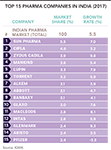
Many of the multinationals invested in India not only to see the opportunities inherent in the country, but also the ethical importance of contributing to the economic health of the nation, bringing their treatments to the country and meeting unmet need. Roche’s Shravan Subramanyam, for example, sees his affiliate as, “not just a multinational organization operating in the diagnostics space. What we are doing in terms of enabling health is actually nation-building and contributing to the economy. India is a very labor- and people-intensive market. Not without reason is the country is known for its skilled labor and technology. If our people fall sick we lose an economic driver, which is the reason why the discussion around preventive healthcare and keeping people healthy is so vitally important to running the economy.”
Sanjiv Navangul, managing director of Janssen, is clear that “Big Pharma companies should be interested in the health of the Indian population as we are 18 percent of the global population and nearly 20 percent of the global disease burden – it is an ethical responsibility for Janssen to be present in India.” Furthermore, Navangul feels that traditional pharma business models are not appropriate in India, suggesting that, “Simply providing medicines to patients, especially in a country with limited resources like India, does not solve the problem. We take an integrated disease management approach to supporting patients, which includes partnering on campaigns aimed at driving disease awareness and treatment adherence, undertaking medical innovation and R&D, and empowering a new generation of healthcare workers through training on clinical management of diseases.”

Sanjiv Navangul, managing director, Janssen
For Novo Nordisk’s Melvin D’Souza, it is the sheer numbers of patients affected by diabetes that drives the company’s activities in India. He notes that, “Novo Nordisk estimates that 46 million people in rural areas are affected by diabetes and that the number of patients will significantly grow to 73.5 million in 2030.” To combat this situation, D’Souza explains that, “In partnership with local health authorities and other stakeholders, Novo Nordisk in India helps more than 4,000 children through 21 ‘centers of excellence’ across the country where they provide free insulin, free consultation and free blood sugar check-ups twice a day to children under 18 with no income.”
Novartis has also been working to fill the gaps and improve access to medicine via infrastructure development through it Aroga Parivar (“healthy family” in Hindi) initiative, first launched in 2007. This program, Novartis’s first social business model, is “organized into cells that currently total 239. Each cell – covering 35-40 km – includes 60 to 75 villages and small towns with around 200,000 inhabitants. Today, the program operates across 11 Indian states, covering some 14,000 villages and small towns that are home to more than 32 million people,” notes Jawed Zia. Arogya Parivar broke even in less than three years and has been sustainable ever since, meeting both its commercial and social targets. It is expected to reach 44 million people through health education meetings and health camps by 2022.”
‘MAKE IN INDIA’: A BOON FOR MULTINATIONAL MANUFACTURERS
In addition to policy updates in the healthcare, pharmaceutical pricing and IP fields, India has also looked to improve the state of its manufacturing industry. On this track, Prime Minister Modi’s ‘Make in India’ campaign, first launched in 2014, aims to attract even more MNCs by allowing 100 percent FDI in 22 sectors of the economy and emphasizing the country’s manufacturing appeal and cost/value ratio.
Ranjit Madan, CEO of the Life Sciences Sector Skill Development Council (LSSSDC), explains that, “the ‘Make in India’ campaign encourages companies to set up shop in India and leverage the advantages that the country has to offer in terms of demography and domestic demand.” “The country’s potential as a competitive place to set up operations and the ease of doing business are definitely getting better,” he assures. Within this cross-industry scheme, “the government is fully cognizant of the opportunity and potential that pharmaceuticals has to offer and has therefore designated it one of the five or six priority sectors for the ‘Make in India’ initiative,” notes Madan.

Ranjit Madan, CEO, LSSSDC
India’s attractiveness as a manufacturing hub is based on a number of attributes. Suresh Pattathil of Ferring identifies three: “Firstly, to put up any facility in India is about 40 percent cheaper compared to other global sites. Secondly, here you have trained manpower available which, again, is cheaper than in the US or in the EU. Last but not least, India has a big domestic market which will continue to grow over the next five to ten years.” Not only does India fare well cost-wise in comparison to the US and EU as a manufacturing destination, but Pattathil also posits that his nation punches above its weight even compared to China, adding that “when it comes to manufacturing basic medical products and drugs, India is far superior to developing countries in the Far East due to resources including manpower, a talented and technically educated workforce, along with its many WHO GMP (Good Manufacturing Practices) and US FDA approved facilities.”

Dishman manufacturing plant
Sanjit Singh Lamba of the Japanese firm Eisai – which exports Indian manufactured drugs to Japan as well as supplying the Indian market – outlines his company’s impressive manufacturing footprint in India: “We spent around USD 50 million on the current manufacturing facility in 2009. In 2012 we filed this on an international level to receive accreditations, in the same year we were awarded the title ‘facility of the year’ and in August 2011 we started the first exports to Japan. I think this has been a sort of case study and we created the best-in-class quality systems.” Singh Lamba is adamant that in-country manufacturing no longer means compromising on quality standards, confiding that “What we invested most in was perhaps the training of the Indian personnel at the site because we needed to create an excellence in understanding the real needs of the Japanese patients who, of course, expect exemplary standards. And we were, quite frankly, very successful in doing so: our facility has exported 1.5 billion tablets to Japan in the last three years and we never had quality complaints by patients or authorities.”

Sanjit Singh Lamba, managing director, Eisai Pharmaceuticals
TENTATIVELY SCALING THE VALUE CHAIN
India may have raised its performance when it comes to manufacturing standards and the quality of medicines being produced, but the jury remains out about the country’s ability to properly master cutting-edge technology at a time when drug development is undergoing great transformation and biologics are increasingly the name of the game. Unquestionably more in-country R&D is being conducted than in yesteryear, but that, of itself, only paints part of the picture. “Back in 2000, when the IPA was founded, companies were spending between one and two percent of turnover on R&D, whereas now our members’ research-related spending ranges between two and 13 percent, with an average of eight percent,” exclaims the IPA’s Dilip G Shah.
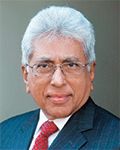
Dilip G Shah, secretary general, IPA
At the forefront of this new era of Indian R&D is Biocon, which Kiran Mazumdar-Shaw asserts, “today stands apart as a very different kind of biopharmaceutical company in India as we have strong leadership due to our strong global perspective of what we do. The fact that our product Ogivri™ is the first biosimilar to trastuzumab approved by the US FDA is a testimony to that focus.” Mazumdar-Shaw continues, “We realized that biopharmaceuticals required huge investments both in terms of R&D and creating manufacturing facilities – and this is what I decided to do as an entrepreneur as I felt there was a big need as well as an opportunity to differentiate ourselves from the rest of the biopharmaceutical companies in India.”

Another investor in R&D is Cachet Pharmaceuticals, as Satish Kumar Singh and Shashi Shekhar Kumar explain: “major R&D activities are carried out at Alkem Laboratories Ltd (Cachet’s parent company). They have a dedicated R&D center. At Cachet Pharmaceuticals Pvt. Ltd. we have a small R&D department which operates at our Baddi manufacturing location. We are committed to developing world class medicines to benefit the patients at affordable prices. For products to be marketed in international markets, we carry out additional studies like bio equivalence studies, stability studies as per the country requirement. Our scientists ensure the safety and efficacy of our products at par with the innovator.”
“Our country has long been renowned as a manufacturing powerhouse and today we see many leading companies investing big in R&D: the top five indigenous drug makers together spent a record of USD 1.2 billion in 2017,” posits Sharvil Patel, managing director of Zydus Cadila. “However, I firmly believe that it is not a matter of how much money you spend, but rather a question of where you are focusing your energies on and how successful you are in those areas that will determine whether you actually advance up the value chain,” he tempers. “Most of what I see around here is players investing more in incremental innovation by coming up with new formulations and product enhancements or filling outstanding gaps in already existing therapies.”

Kiran Mazumdar Shaw, chairperson and managing director, Biocon
Entod would be a good example of this type of phenomenon about ‘innovating around the molecule.’ “We do not, as such, research newer molecules, but rather try to improve the formulations of what we already have in our portfolio and our research is thus more focused on innovative drug delivery which is an area where we identify immense potential to make therapies more patient-centric,” explains executive director, Nikhil Masurkar.
Indeed, examples abound of Indian firms bolstering their value offering, but in many cases this is still within the context of generics. “We have stopped the production of vanilla generics and now dedicate ourselves towards producing specialty ones. This is a logical next focus in any market in which we identify the potential for branded promotion,” recounts Micro Labs chairman, Dilip Surana.
Other firms seeking to buck the trend include Zydus Cadila, which has even gone as far as to purchase a Western company in a bid to break out of the innovation silos experienced back home in India. “We started the year with the acquisition of US-based Sentyln Therapeutics. Basically, we had always been strong in the generics segment and we felt that the time was ripe to build a specialty care franchise alongside. Through this acquisition we are looking to enhance our commercial presence in terms of how to tailor products and place them on the market but, more importantly, to learn a lot and move our business offering to the next level through exposure to new thinking and work styles,” says Sharvil Patel.
J.R. Vyas, chairman of Dishman Group, tells a not altogether different story of looking abroad to secure the kind of R&D impetus and blue sky thinking that he identified as lacking within the domestic market. “When I went to Switzerland to close the operations for the purchase of Carbogen Amcis, I saw that more than 400 Swiss German PhDs were working in their R&D lab. This ultimately spurred me to go ahead with the acquisition,” he recalls. “Historically, R&D centers were concentrated within the developed world as companies restricted high-end R&D activities to their home country and within the physical boundaries of the corporate firm. Little by little, certain multinationals are belatedly deciding to look into more emerging markets and establish local R&D centers, but, while the market size renders India an attractive location for large foreign companies seeking to expand operations, I believe that the lack of standardization of training across the country plays an important role in preventing companies to do so. For instance, in the Carbogen Amcis offices everyone is PhD educated, commercially savvy, but you would be hard pressed to seamlessly source that same base of talent out here in India,” he reasons.

J.R. Vyas, Chairman and managing director, Dishman Group
Some argue that the real impediment to transformative innovation is not just the local resource base or amounts expended on R&D, but the ingrained mentality of scoping in on ‘affordability’ and ‘volume.’ “Currently, India holds the distinction of being the pharmacy of the world, but the ultimate vision of becoming an internationally renowned innovation hub is still some way off. In order to accomplish this ambition, there needs to be an overhaul of the country’s pricing policy and a certain shift of mentality,” posits Takeda’s executive director, Ashok K. Bhattacharya.
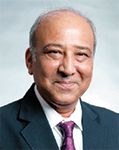
Ashok K. Bhattacharya, executive director, Takeda
“We are cautiously scaling the value chain, but it is slow and gradual process... the basic reality today is India is excellent at re-engineering; however, we still have much to do to refine our skills at innovation. This is very much a nationwide predicament…even looking outside of medicine, I cannot recollect the last great car, device, or phone we created,” laments OPPI’s Kanchana TK.
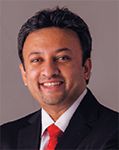
Sharvil Patel, managing director, Zydus Cadila
Others take a more optimistic view and believe it is only a matter of time before India starts to realize its full innovation potential. “Low-cost manufacturing capabilities augmented with a strong R&D is very much how I see Indian pharma’s future,” predicts Abbott managing director, Venu Ambati. “As we gradually shift from generic to innovative, ‘bigger is better’ models are also slowly caving in. I am sure India will some day shift to being recognized for its innovation capabilities, rather than being just a frugal innovation location, which incidentally is something the country does very well indeed,” he forecasts.
LOOKING WESTWARDS
On the back of a strong domestic manufacturing base and the aforementioned prowess in frugal innovation and affordable medicine, homegrown Indian pharma brands like Lupin and Glenmark have successfully made it into the top 50 companies globally in terms of sales by taking a larger role in the export of generic drugs and vaccines. With Indian companies now covering more than a quarter of the overall US generics market, it goes without saying that the main export target is the new continent.
After a few initial hiccups, Indian ability to penetrate the American market has been a resounding success. “In 2015, when some of our members received warning letters from the US FDA, it came as quite a surprise. We did not, however, take the view that India and Indian companies were being targeted as we had already established a fairly positive relationship with the US FDA,” reflects the IPA’s Dilip G Shah. “In fact we have entered into a biannual direct dialogue with the FDA that will benefit both sides and the strong results of these kind of initiatives are there for all to see: right now approximately 1,400 manufacturing units in India are WHO GMP certified, 573 facilities are FDA approved and over 800 are UK MHRA approved. India has the highest number of US FDA-registered manufacturing facilities outside the US and we will work toward becoming a quality benchmark globally,” he emphasizes.
“I believe the lesson now is well learnt and that there is the willingness to understand the seriousness of complying with US standards, not only at GMP level but also in terms of data integrity,” perceives Yogesh Agrawal, managing director of Ajanta Pharma, of which a full ten percent of annual revenues of USD 308 million derive directly from the US. “Some 35 percent of US generics volume is supplied by Indian companies, hence Indian companies play a massively important role in the US generic space, so I am very optimistic,” he adds.
Certainly, the American market’s reliance on Indian affordable medicine continues to deepen. The US FDA has recently granted approval for Tesaro’s cancer drug which will generate revenues of two billion over the course of three to four years and which Dishman will produce at Unit Nine of its Bavla facility. “When the clinical trials of this drug were happening, Dishman was the API supplier alongside being a key supplier to Tesaro. Now that this cancer drug has been approved the volume will jump significantly. Given the relationship and the trust that we have established over the years with the US FDA they allowed us to start the supply of APIs to Tesaro already,” remarks chairman J.R. Vyas.
THE SOUTH-SOUTH DIMENSION
While Indian companies’ forays into the American pharma market are widely recounted, less publicized has been the manner in which many Indian entities are establishing a strong foothold in underdeveloped or dysfunctional markets in Africa and Asia. “As part of our internationalization strategy, we picked some unique emerging markets like Iraq for instance where we invested during the UN sanctions. In Iraq we participated in the Oil-for-Food Program, which was a UN resolution established to allow Iraq to sell oil on the world market in exchange for food and medicines. When the market opened up, we saw that there were many opportunities and, as a matter of fact, we are today the sixth largest private pharma company in the country,” narrates Ajanta Pharma’s Yogesh Agrawal. “In Africa, we have established wide-ranging footprint and this is actually where 40 percent of the global revenues come from… Furthermore, we supply antimalarial products to initiatives like the Global Fund and stand proud as the first generic company to secure WHO prequalification approval,” he adds.
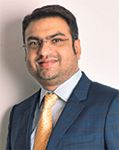
Yogesh Agrawal, managing director, Ajanta Pharma
Entod’s development story is not dissimilar. “Our main focus is in Africa right now and within Africa we have certain markets that we are penetrating quite well such as Nigeria and Kenya and South-East Asia is also very much on the radar with the Philippines counting as one of our biggest export markets… Our aim as a company is to provide medicines in countries where those medicines do not exist so we find it much more exciting to go to a small country in Africa where we can make a tangible impact,” reasons Nikhil Masurkar.
Part of the reason why Indian companies are able to thrive in such markets may well be to do with their first-hand experience of India’s own developmental trajectory. “When you look at India three years back, places like Morocco, Algeria or some other African countries are easily associable to what our own country used to be like. Accordingly, we tend to replicate the Indian business model in some countries,” observes Cipla’s Umang Vohra.
“2017 has been the year during which we evaluated how to gain a bigger share in emerging markets. South Africa is a great example of this as we rank as the fourth biggest pharmaceutical company in the country. We see this as a great opportunity because, while the time for Africa may not be this or next year, there are billions of people living there and some of these places are ignored by companies because they are not the most exciting locations to set up shop, compete and grow, but you do have opportunities to gain a great first-mover advantage,” he expounds.
On top of that, there is the Indian tendency to not equivocate, but rather to race in and seize opportunities in advance of them becoming completely prospective. “Wherever we see potential, we conduct studies and surveys. Sometimes it is just very fortunate. For instance, I once read an article about blood products being carried by drones from one city to the other in Rwanda. We did primary research in India and then decided to travel there with my team for survey and to check the possibility to start a pharmaceutical business and nowadays we operate pretty successfully there,” recall Cachet Pharma’s Satish Kumar Singh and Shashi Shekhar Kumar.

Country Report: United Arab Emirates
March 1st 2020With an estimated annual growth rate of 10%, the Middle East is now consistently outpacing traditionally sought-after “pharmerging” heavyweights such as China and Brazil. The United Arab Emirates is at the center of this newfound momentum-asserting its own credentials as a prospective destination for big-ticket foreign investment in healthcare.